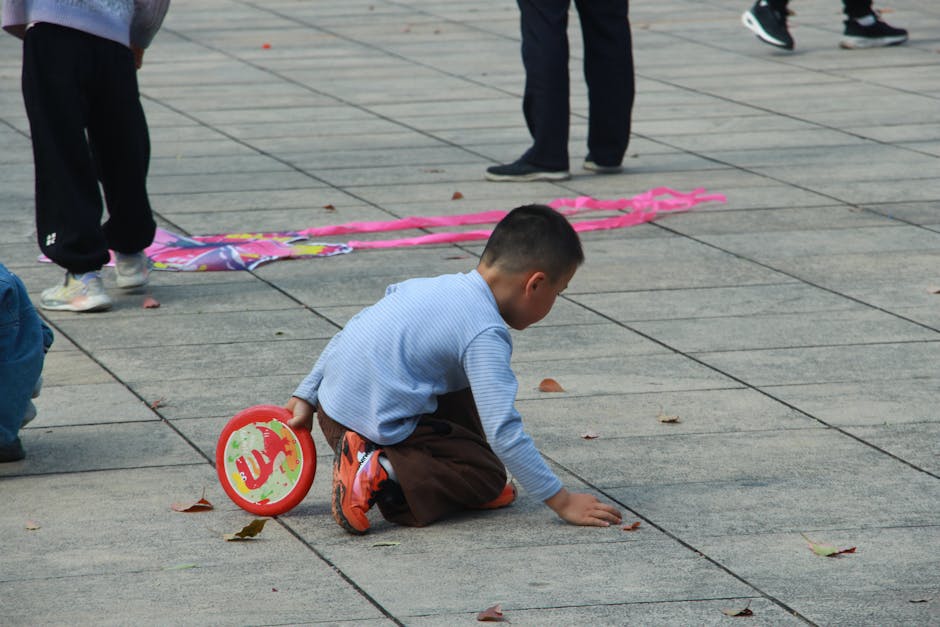Hand-Drawn Worlds and Metroidvania Roots
A Bold Visual Direction
This upcoming title sets itself apart with its striking, hand-drawn art style. Every environment, character, and animation is crafted with meticulous attention to detail, giving the game a textured, painterly aesthetic that feels both nostalgic and fresh. The artistry deepens the emotional resonance, drawing players into the narrative without relying on photorealism.
- Every frame is illustrated by hand
- A vibrant color palette sets the tone for each area
- Animations flow like moving sketches, enhancing immersion
Narrative-Driven Exploration
Unlike traditional platformers, this game is built around a rich, story-first experience. Exploration is deeply tied to the narrative, with environments evolving based on player choices and story progression.
- Story events unlock new areas and mechanics
- Environmental details reveal character backstory
- Side quests tie into the core narrative, encouraging thorough exploration
Parallel Worlds as Gameplay
Drawing inspiration from classic metroidvanias, the game introduces a parallel worlds mechanic that adds depth and complexity to level design. Players will need to shift between realities to solve puzzles, uncover hidden paths, and gain access to new abilities.
- Shift between two unique versions of the world
- Manipulate elements in one world to affect the other
- Unlock movement powers that change how you traverse both dimensions
Release Window and Platforms
The developers have confirmed a launch window for the second half of 2024. The game will be available on multiple platforms, ensuring a wide player base right from day one.
Platforms include:
- PC (via Steam and Epic Games Store)
- Nintendo Switch
- PlayStation 5
- Xbox Series X|S
Puzzle-Piecing Through a Ghost Town’s Secrets
A Mystery Told Through Letters
Imagine unraveling a town’s forgotten history using only fragments of letters and long-lost notes. That’s the core of this emerging trend in narrative gaming. Players step into a first-person perspective where storytelling unfolds through scattered, cryptic correspondence.
- Each letter adds new context, red herrings, or emotional weight
- Narrative builds organically as players reconstruct the timeline
- Encourages deep reading and replayability to catch layered clues
A Hybrid Format That Engages
This isn’t just another visual novel and it’s more than an escape room. This genre blends formats to create a truly immersive experience.
- Visual novel elements allow for branching dialogue and emotional depth
- Escape room mechanics challenge players to apply logic and piece together story-driven puzzles
- Mixed media includes handwritten notes, map overlays, and dynamic visuals
The result: gameplay that feels like deciphering a cinematic scrapbook.
Strong Early Reactions Fuel Momentum
Demo versions and early previews have generated impressive buzz. Community forums and playtester groups are already dissecting characters, theories, and possible endings.
- Fans praise the immersive tension and original aesthetic
- Streamers and testers report strong engagement during story twists
- Developers are actively refining gameplay based on feedback
This title is on track to be one of 2024’s standout indie experiments, blending emotional storytelling with interactive mystery.
Indie games have long lived in the shadow of AAA giants, but in 2024, it’s clearer than ever that they’re playing a different game entirely. What indie developers lack in massive budgets, they make up for in guts. They take risks. Storylines aren’t filtered through committees. Mechanics aren’t designed to please everyone—they’re meant to be interesting, different, and sometimes weird in the best way.
It’s why an offbeat pixel art side-scroller can pull more emotional weight than a blockbuster sequel. Indie devs have the freedom to tell personal stories, tackle hard topics, or build game systems that wouldn’t survive a pitch meeting at a big studio. And players are noticing. More gamers are seeking that raw, creative energy—something not afraid to break the mold.
The indie scene itself is maturing fast. Tools are more accessible than ever, letting solo creators punch way above their weight. Distribution is easier. Communities are tighter. Crowdfunding is smarter. Studios that launched on Kickstarter five years ago now release multi-platform hits.
In other words, the creative gap isn’t closing. It’s growing. And indie games are leading the charge.
Swordfighting and Rhythm Collide
Fighting to the Beat
A standout trend gaining traction in 2024 is rhythm-based swordfighting. This isn’t just flashy combat—it’s skill-based action where successful combos are synced to music tracks, creating a responsive and cinematic experience.
- Precision timing matters more than button-mashing
- Mastery involves learning patterns and reacting rhythmically
- Music dynamically interacts with gameplay, adding another layer of strategy
Co-op and PvP Rhythm Duels
Innovative developers are now exploring multiplayer elements, turning rhythm combat into shared or competitive experiences.
- Optional co-op modes let players sync up in tandem attacks
- PvP rhythm duels reward timing, pattern recognition, and adaptability
- Competitive scenes are emerging, driven by high-skill ceiling mechanics
Building Buzz on the Festival Circuit
These new rhythm-combat games have already begun generating momentum, thanks to strong showings at recent gaming festivals.
- Positive buzz at indie showcases and demo events
- Highlighted as “must-play” by genre-focused reviewers
- Players and critics alike praising the tight controls and hypnotic gameflow
As more players seek unique, skill-driven experiences, rhythm swordfighting is carving out its niche with style and substance.
Grid-Based Combat and Retro-Future Style: What Sets This Game Apart
The core of the experience is a tight grid-based combat system, where every move matters. It’s tactical but fast. Players use hacking-themed abilities to outmaneuver enemies, turning code into weapons and firewalls into shields. The skillset leans more digital guerrilla than traditional RPG. You’re not just swinging swords; you’re injecting viruses, rebooting enemy AI, and forcing system crashes mid-battle.
Layer that on top of a synthwave-drenched soundtrack and visuals ripped straight from a forgotten 1984 arcade cabinet, and you get something that feels fresh and nostalgic all at once. Neon lights, VHS-style effects, and chunky interface elements don’t just look good—they set the tone for a world that’s glitchy, synthetic, and full of attitude.
The developers are a small indie team with a background in modding and pixel art, fueled more by obsession than budget. Their vision is clear: build something sharp, strange, and mechanically rich, no fluff. It’s not trying to be everything. Just one thing, done well. And that’s exactly why it works.
A lonely desert planet sets the tone before a single line of dialogue. It’s dry, brutal, stripped of noise. Every decision you make shifts something real. Resources are limited. Encounters are sparse. You can’t just click and forget. There’s weight.
Environmental storytelling does most of the heavy lifting. Abandoned outposts, symbols etched into rock, half-buried wreckage. It never tells you what happened. You just feel it. Through small visual cues and subtle world details, the narrative unfolds without a word.
Crafting plays a quiet but important role. It’s simple. No endless menus, no bloated systems. Just enough to stay alive or get you to the next ridge. You gather only what you need, and even that might cost you.
Then there’s the silence. No soundtrack to guide the mood. Just wind, sand, and your own breath. That choice creates space. Space to think, dread, hope, guess. The absence becomes part of the story. And when something finally does break that quiet, it matters.
Why Getting on the Indie Radar Early Matters
Limited Runs and Surprise Drops
The indie game scene thrives on momentum, and timing is everything. Many of the most anticipated titles in 2024 will launch with limited runs or unannounced surprise drops. Being early means access to:
- Exclusive alpha or beta access
- Limited-time launch discounts
- First-mover bragging rights in gaming communities
Popular titles, especially from smaller studios, can sell out quickly on physical platforms or surge in popularity after rollout. Discovering and supporting these games early gives you a front-row seat as they evolve.
Supporting Indies Shapes the Future
When you support indie developers early, you are not just buying a game — you are directly influencing what gets developed next. Indie success often hinges on the earliest traction from players, streamers, and reviewers.
By engaging with new releases or sharing feedback:
- You help studios secure funding and attention
- You increase the chances of sequels, expansions, or future innovation
- You foster a more diverse and experimental gaming landscape
Pro Tip: Track Demo Season and Steam Next Fest
Two of the best times to discover promising indie games are during demo-heavy events.
Keep these on your radar:
- Demo Season – An unofficial window when studios roll out playable teasers
- Steam Next Fest – A semi-annual event that spotlights hundreds of titles in development
Smart players bookmark titles during these windows and wishlist early so they are notified the moment something drops.
Getting ahead of the curve not only supports indie devs but also builds your credibility in niche gaming circles.
The Rise of Devlogs, Tease Clips, and Discord-first Drops
Vloggers are no longer just documenting the final product—they’re opening the curtain early. Game devs, indie filmmakers, and even solo creators now use YouTube devlogs, TikTok teases, and Discord drops as part of the build-up. It’s less about dropping polished content from the sky and more about bringing the audience along for the ride.
This pre-release strategy works because it builds investment. Fans who see the rough sketches or vote on the first trailer clip feel like they’re part of something. And that matters. In 2024, people want community, not just consumption. A well-paced devlog or a behind-the-scenes minute on TikTok builds momentum before launch and keeps followers coming back for the next step.
Discord’s role here is huge. Private server updates, early sneak peeks, feedback polls—those moments create micro-hype loops. The takeaway? If you wait until the finish line to share, you’re probably too late.
For a deeper look into this shift, check out The Role of Public Demos and Betas in Game Promotion Today.
The Future of Gaming Is Bigger Than AAA
AAA studios still dominate the charts, but they’re no longer the only ones setting the pace. Indie developers are where the weird, fresh, and genuinely surprising ideas are showing up. Smaller teams aren’t bound by boardrooms or giant budgets. That freedom is fueling real innovation—whether it’s genre mashups, experimental storytelling, or new ways to build community around games.
Some of 2024’s most talked-about titles are already coming out of garages, not skyscrapers. These devs are faster to pivot, more in-tune with niche audiences, and less afraid to take risks. That’s where real creative heat is happening.
Gamers and content creators alike should keep their ears to the ground. Scouting for indie gems means staying curious, skipping cynicism, and giving smaller titles a real shot. The next big thing probably won’t be announced on a giant stage. More likely, it’ll show up in your feed when you least expect it.





